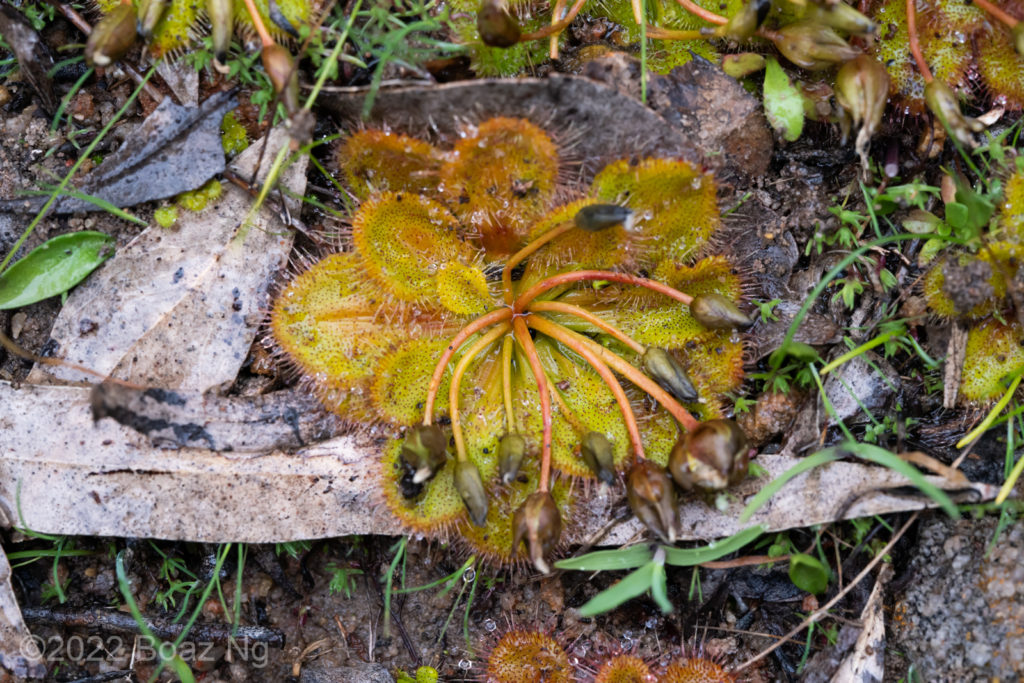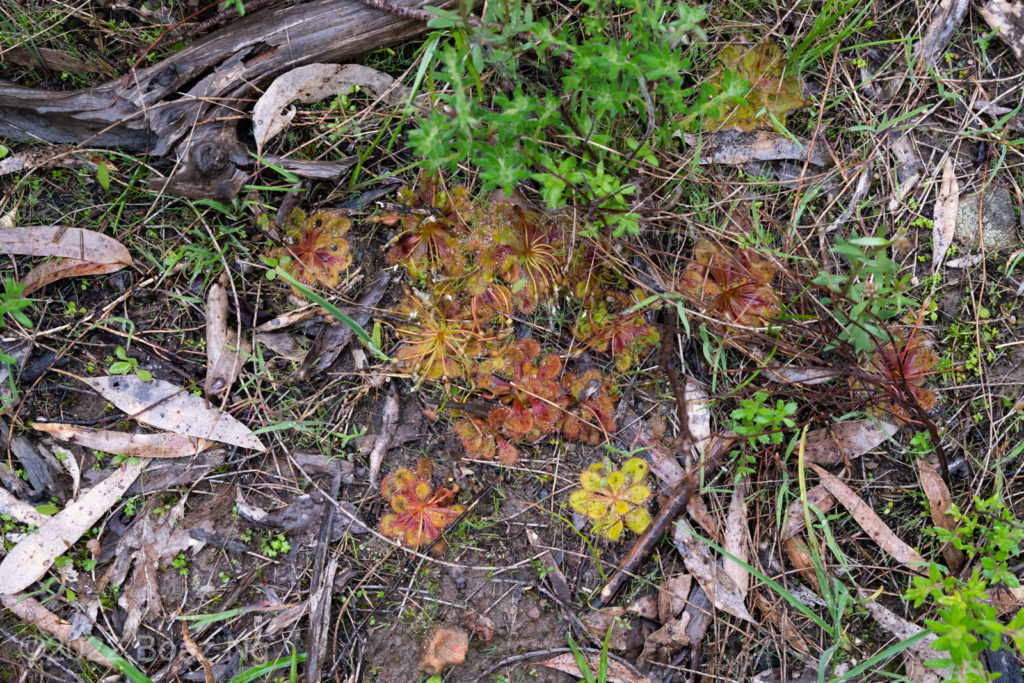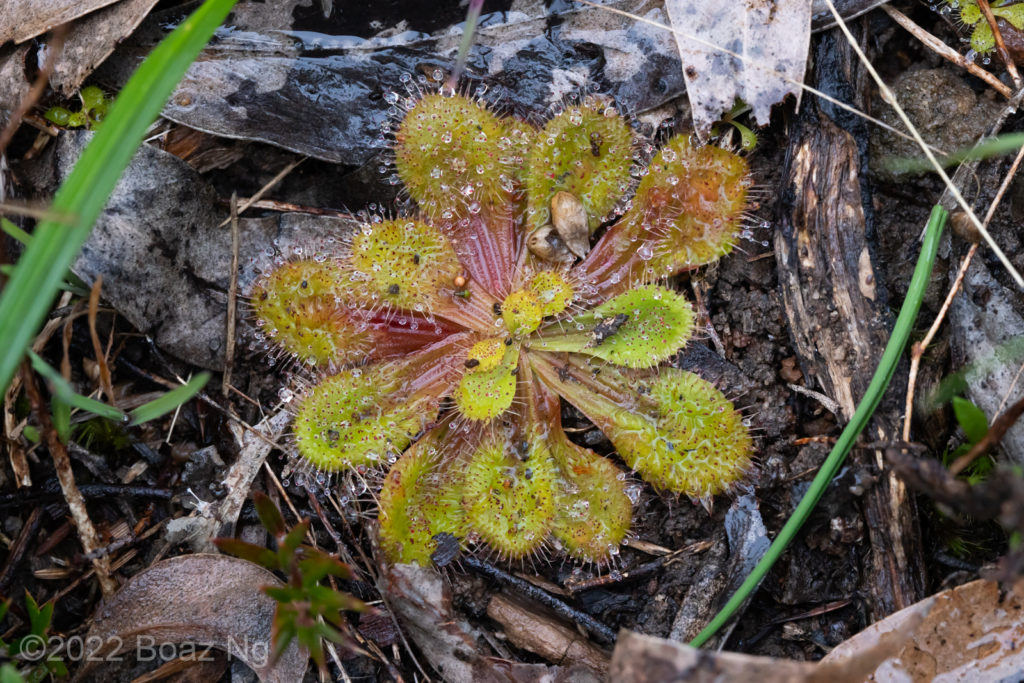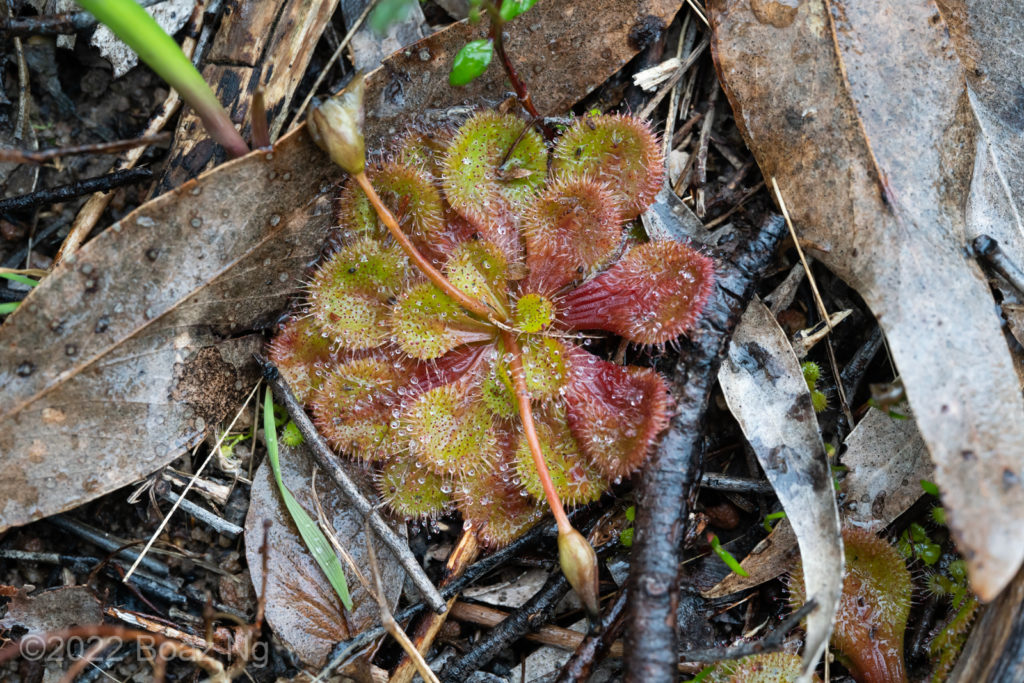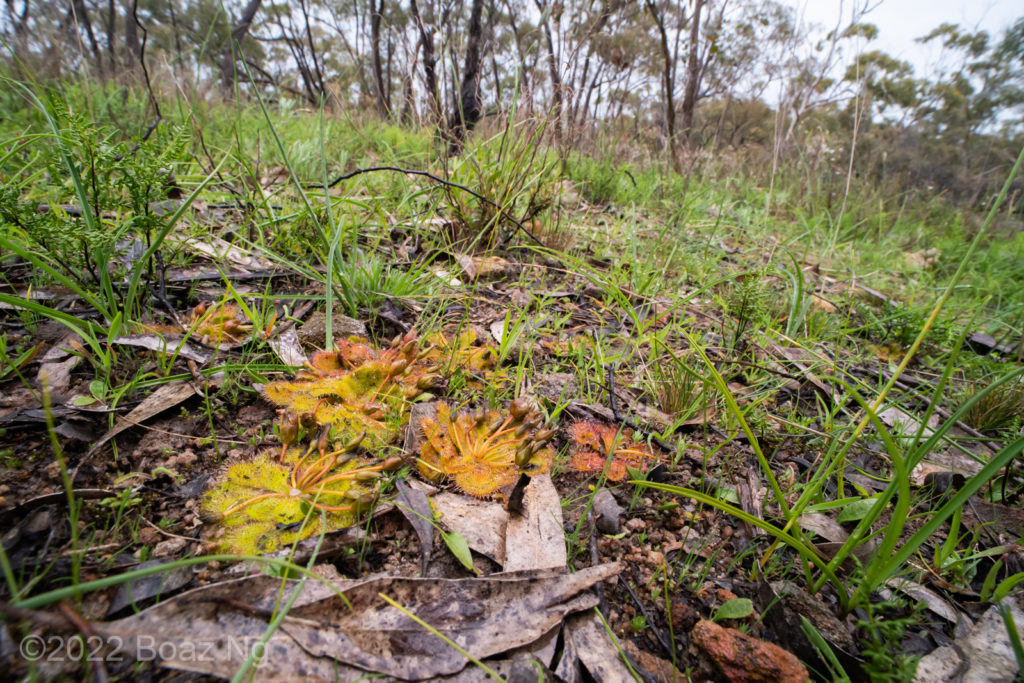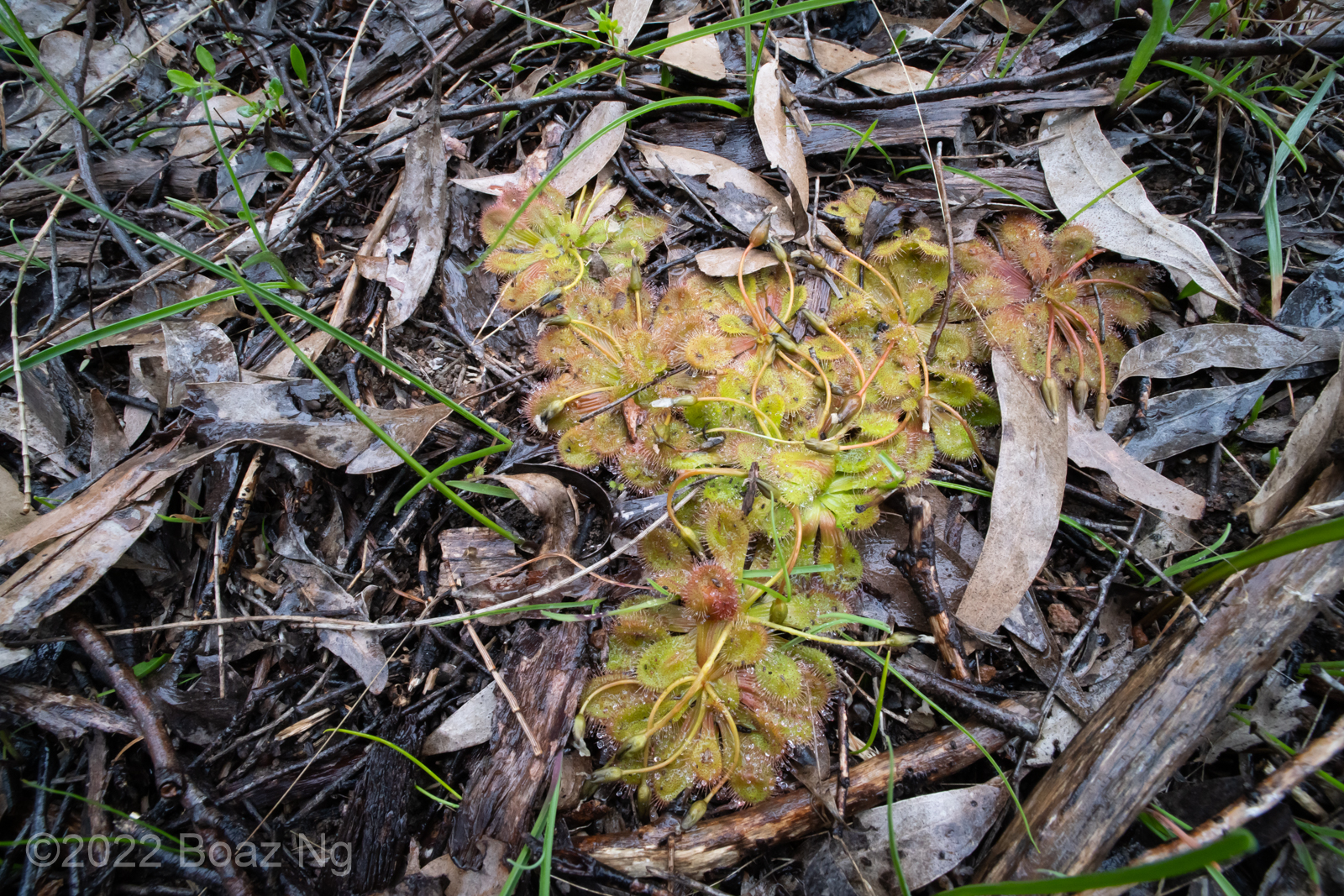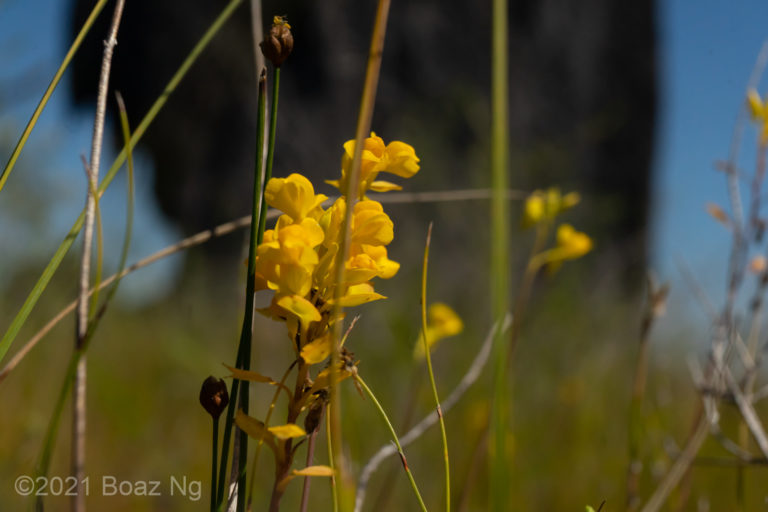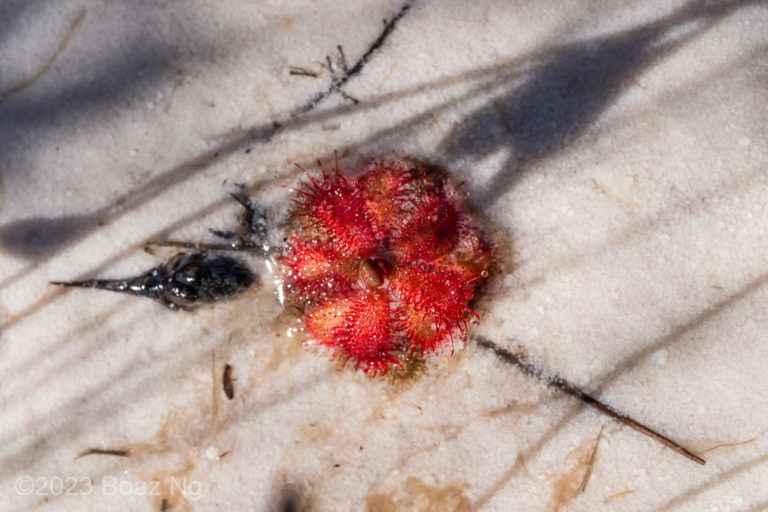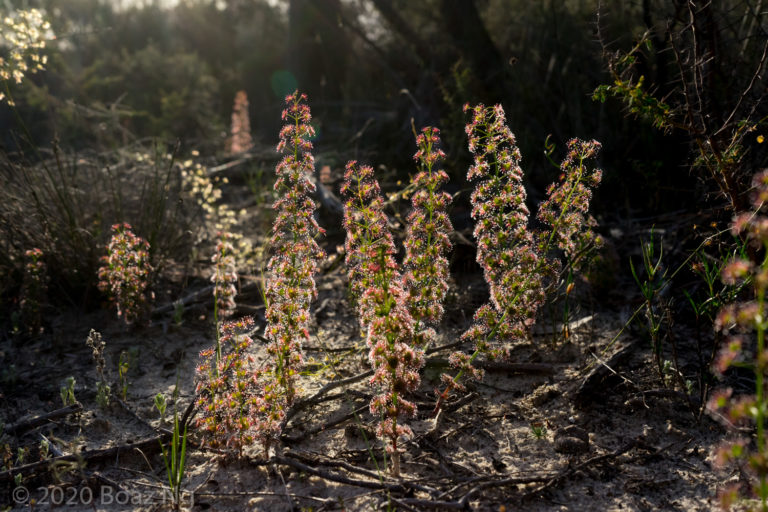Drosera whittakeri is a rosetted tuberous sundew endemic to South Australia. The species is named after Joseph Whittaker, who collected the species in the 1800s.
Drosera whittakeri has a rosette of leaves that grows around 7cm in diameter. The leaves are spathulate, with a distinct petiole that is broad and around half the length of the leaf. The laminae are broad and rounded. Smaller leaves can be formed towards the end of the season. The flowers are borne singly on the scapes, with up to 5-20 flowers per plant. The species does not have a strong propensity to divide clonally.
The species is distributed in southeastern South Australia, mainly in a 100 km radius around Adelaide. It grows in heathland and open woodland in nutrient poor substrates.
Drosera whittakeri is part of a complex of four closely related species. It is distinguished from Drosera aberrans by its larger rosette size, more flowers (D. aberrans typically has up to 4 flowers), and fewer clonal divisions (D. aberrans has a strong propensity to divide clonally). It is distinguished from D. praefolia by its long petioles and spathulate leaves (D. praefolia has short petioles and oval leaves) and late flowering (D. praefolia flowers prior to the emergence of leaves). It is distinguished from D. schmutzii by its broad petioles (the petioles of D. schmutzii are thin) and lack of a cauline whorl of leaves (D. schmutzii sometimes forms an extra whorl of leaves on a short stem).
